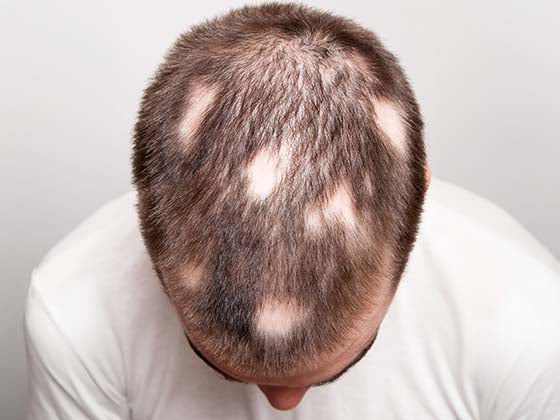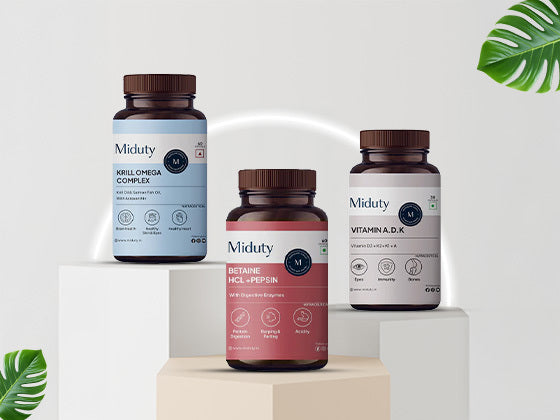- Mechanism of PCA Peels
- Types
- Benefits of PCA Peels
- PCA Peels & Sensitive Skin
- Pre-Op Do’s & Don'ts
- Tips for Long-Term
- FAQs
PCA Skin Peels are professional-grade chemical peels for addressing a wide variety of issues, such as fine lines and wrinkles, acne, and hyperpigmentation. Developed by PCA Skin, the brand synonymous with science-backed, dermatology-focused skincare solutions, PCA Skin Peels exfoliate the outermost layers of the skin, promoting cellular turnover and leaving a fresher, smoother complexion. Depending on individual skin needs, PCA offers a range of peel strengths and formulations catering to different skin types, hence appropriate for anyone who wants to rejuvenate the skin with minimal downtime. Application in a regular pattern under professional guidance can contribute to ostensibly refined skin texture, even tone, and improved clarity. PCA Skin Peels are most in demand because of their mild approach. They are unique among chemical peels because of the right balance between efficacy and minimum irritation.
What Are PCA Skin Peels and How Do They Work?

PCA Skin Peels are highly advanced chemical exfoliants developed by PCA Skin to help treat a variety of skin problems through safe, controlled peeling. They can be used on most skin types and conditions, including acne, discoloration, and signs of aging. Here's a summary of how they work and what makes them different:
-
The exfoliation process: PCA Skin Peels work by debriding the dead skin cells lying on the outer skin area. This induces a reversal of cell turnover and presents an appearance of fresh new layers of the skin.
-
Formulations-PCA has peel strengths/ingredients such as salicylic acid, lactic acid, and TCA geared towards different types and complaints of the skin.
-
Gentle and Gradual Action: Unlike most chemical peels, the peels by PCA Skin don't emphasize harshness. The progressive peeling does less irritation and redness that can be applied on the most sensitive skin.
-
Collagen Stimulation: Using PCA peels usually leads to stimulation of collagen. Because of this, the elasticity and firmness improve, hence fewer lines, and it makes the face appear younger.
-
Minimal Downtime: Most PCA Skin Peels are designed to give a mild exfoliation. This means that individuals can continue with their normal daily activities without having to face significant recovery time or stay.
In a nutshell, PCA Skin Peels are the go-to for anyone looking for effective, safe exfoliation with noticeable results and minimal discomfort. Be it acne scars, uneven tone, or signs of aging, the gentle yet powerful formulations offered by PCA will provide the perfect customized solution to bring about smoother, healthier, and more radiant skin.
The Science Behind PCA Peels: Key Ingredients and Their Benefits

PCA Skin Peels come in a range of strong acids, each with different benefits for different skin problems. Some of the major ingredients are:
-
Lactic Acid: This AHA exfoliates the dead skin cells, hydrates, and inhibits melanin production to reduce hyperpigmentation.
-
Salicylic Acid: The BHA salicylic acid penetrates the oily skin and clogged pores in order to exfoliate inside the follicle. It reduces inflammation and solves breakouts.
-
Trichloroacetic Acid (TCA): TCA, present in a concentration that differs by product, provides a more aggressive exfoliation and so, deepens fine lines, wrinkles, and scars due to acne.
-
Kojic Acid: The agent causes an equal skin tone since it inhibits the synthesis of melanin and is for that reason an excellent anti hyperpigmentation.
-
Citric Acid: This is one of the chemical constituents present in citrus fruits, leading to exfoliation thus promoting an even and glowy skin condition.
-
Hydroquinone: Since hydroquinone is skin whitener, it functions by reducing melanin synthesis. Hyperpigmentation is mainly dealt with via inhibition of the hyperpigmentation pathways.
-
Alpha Lipoic Acid: Alpha lipoic acid, being antioxidant, exerts anti-inflammatory properties along with dealing with hyperpigmentation because of acting on internal pigmentary pathways.
-
Emblica: Known as an Indian gooseberry, the emblica has high content of tannins, hence discolorations caused with age are not noticeable as often, so this product helps in brightening of the skin along with brightening of the complexion.
-
Silymarin: A powerful antioxidant that offers anti-inflammatory effects and protects against oxidative stress, yet allows the skin to appear healthier.
Ingredients have been selected for their exfoliating, hydrating, and targeted treatments to leave the skin clearer and more evenly toned.
How PCA Peels Penetrate the Skin for Optimal Results

PCA Peels are produced in a way to gain deeper penetration into the epidermis, as with lesser irritation. How PCA Peels work and for which optimal results are accomplished by it are as follows:
-
Surface Exfoliation-Active acids of a PCA peel, such as salicylic acid, causes breakdown of bonds between the epidermal dead cells along with the surface exfoliation. The instant fallout of dead cells offers them with a smoother and an energetic glow.
-
Controlled Acid Depth: Specific acids' concentrations are blended to penetrate and work only at the desired depth without causing over peeling. Milder concentrations remain within the epidermis that is the outer layer of skin. Medium strength peels penetrate deeper working at a more adequate depth to cause the needed skin improvement like clearing acne, eliminating discolorations among other results.
-
Targeted Cellular Renewal: As the agents penetrate deeper into the pores, they induce cellular turn-over, which brings freshly healthier cells to the tops of the skin. Hence, it fades away apparent lines of aging, skin discoloration, or blemishes with continuous usage.
-
Increased Collagen Formation: TCA ingredients are deep penetrating agents as they stimulate the dermis where collagen is produced naturally. This action brings about better elasticity and firmness of skin by reducing fine lines as well as wrinkles.
-
The irritation to your skin is kept down by PCA Peels' strategy of balancing exfoliants with soothing agents. Consequently, it won't overdye or be overly sensitive while using it, allowing usage on almost any kind of skin, including extremely delicate skin.
Multi-level penetrations allow PCA peels to target your problems from one area of your skin in a rejuvenating process so that you'll gain fresh, even tones with an ultra-smooth surface devoid of much irritation or a loss of downtime.
Different Types of PCA Peels: Finding the Right One for Your Skin

PCA offers various peels, each targeting a specific skin concern. All the peels are designed for different skin types and needs. Here is a guide on understanding these peels and tips to help you find the best match for your skin. Different types of PCA Peels are:
-
Sensi Peel
Gentle, lactic-based peel. These peels are suitable for sensitive skin types as they calm the epidermis and remove slight peeling, with added redness reduction properties as an added bonus, a great choice for sensitive users or those with rosacea.
-
Ultra Peel
Rich in TCA and lactic acid, Ultra Peels are great for eliminating and reversing fine lines and early signs of sun damage caused by aging. For clients who are concerned with achieving a firming look of youthfulness, it should be applied.
-
PCA Peel with Hydroquinone
Specifically designed for hyperpigmentation issues, this peel contains hydroquinone that will lighten the color of dark spots and the skin tone. It's best suited for robust skin types that face discoloration.
-
PCA Peel Hydroquinone-Free
It is designed for sensitive skin types or for individuals who do not want to use hydroquinone. It works just as well for that individual with sensitive skin or does not like using hydroquinone. The ingredients used in the peel contain kojic acid, which provides an even skin tone without causing irritation.
-
Clarifying Mask and Peel Combination
Designed for oily and acne-prone skin, this peel combines salicylic acid and antibacterial properties to provide deep cleansing and the reduction of breakouts, excess oil control, and overall brightening and even tone.
Some of the things to look out for when choosing the best PCA Peel are:
-
Take into Consideration Your Skin Type: For sensitive or dry skin, milder peels, like the Sensi Peel, can be used; while people with oily or acne-prone skin can make use of a more powerful oil-targeted peel like the Clarifying Mask.
-
Identify Your Main Concern: Choose a peel that matches your main skin concern. For instance, if you have pigmentation, then you would choose PCA Peel® with Hydroquinone, and for fine lines and aging, you can use Ultra Peel®.
-
Seek Professional Advice: A licensed aesthetician or dermatologist can decide which peel is best suited to your skin's current condition and goals.
-
Understand downtime needs: If you are considering something as strong as Ultra Peel, you can expect a bit more downtime compared to some of the milder options, like Sensi Peel, so be prepared a little in advance.
-
Patch test: If your skin is sensitive, ask to patch test or start off with a lower strength peel and see how your skin handles it.
Based on the type of skin, specific issues you are facing, and a consultation with an expert, you will be able to confidently choose a PCA peel that truly fits your needs and ensures safe effective results.
Benefits of PCA Skin Peels: Why They’re Worth Considering

PCA Skin Peels have multiple benefits, so it can be a good choice if you want to elevate your skincare routine. Here's why PCA Skin Peels deserve a try:
-
PCA Peels exfoliate dead skin cells, making the face look smoother and more even, with reduced roughness.
-
PCA Peels can lighten dark spots and other pigmentation using kojic acid and hydroquinone, for a better balance of the skin.
-
Boosting collagen, these peels reduce fine lines and wrinkles for firmer, youthful-looking skin.
-
Salicylic acid and antibacterial agents target acne, open pores, and reduce oil production, making them well-suited for breakout-prone skin.
-
Gently effective, PCA Peels work well on most skin types, including sensitive, because of their soothing properties.
PCA Skin Peels: the perfect option for customized professional-grade exfoliation with minimal downtime and with significant visible improvements in clarity, texture, and radiance.
Addressing Acne, Fine Lines, and Hyperpigmentation with PCA Peels

PCA Peels have been created with three core issues in mind: acne, fine lines, and hyperpigmentation. It helps bring rejuvenation from the deepest outer layers of the skin. Here is how PCA Peels handle all these issues:
-
Acne
Acne PCA Peels containing salicylic acid along with antibacterial elements push through the clogged pores to reduce inflammation, prevent future breakouts, and ensure minimal oil production. This process exfoliates dead cells and breaks the congestion which will not lead to acne again and allows a brighter patient.
-
Fine Lines and Wrinkles
PCA Peels contain TCA or trichloroacetic acid, in addition to exfoliating agents, to combat fine lines. They stimulate the rate of production of collagen at a deeper level in the skin layers. The skin is smooth with fewer wrinkles since its elasticity increases as well.
-
Hyperpigmentation
PCA Peels do use ingredients that help break up melanin production while utilizing kojic acid or hydroquinone to stop overproduction and lighten pigmented areas, which cause brown spots, dark areas in the skin. Those additives help equalize tones around the skin area that requires peeling.
Since they target a few major areas while slowly exfoliating the skin without doing too much, these are more effective remedies to acne, aging, or color issues for the person dealing with these issues: giving smoother, clearer skin for an even-toned facial appearance.
How PCA Peels Promote Skin Renewal and Brightening

PCA Peels are a general approach to promoting skin renewal, and a brightening agent. They suit anyone looking for bright radiant skin through exfoliating acids and active ingredients targeting dullness, uneven tone and signs of aging.
-
Remove dead skin cells to reveal a smoother, clearer complexion underneath.
-
Induce faster cell turnover so the skin can regenerate newer, brighter layers.
-
Fade dark spots and balance your skin tone with kojic acid and lactic acid.
-
Boost collagen production and over time, improve elasticity and firmness.
-
Give you instantaneous radiance and long term improvement in skin tone and texture.
With regular use PCA Peels visibly show signs of improvement, reducing uneven pigmentation, dullness and the signs of aging.
PCA Peels for Sensitive Skin: Are They Safe?

PCA Peels can be found in the most delicate preparations for even the most sensitive skin types. With so many options, these are peels to prevent irritation while achieving impressive results, ideal for sensitive skin or highly reactive skin.
-
Mild exfoliants like lactic acid can create effective exfoliation yet do not make the person sensitive to the peel, and soothing ingredients prevent irritation from happening during and especially after peeling.
-
Utilize low concentration acids in peels such as the Sensi Peel®, formulated to cater to sensitive skin; prevent redness and pain associated with irritation.
-
The key is to balance the peeling with hydration - one should not exfoliate so much that barrier levels become compromised, including being lost, and moisture goes along with it.
-
To enable personalization, develop product lines that allow providers the ability to vary in strengths according to individual skins needs.
Generally, the PCA Peels are safe for sensitive skin when administered by a professional, providing a mild yet effective approach to common concerns about dullness, texture, and mild pigmentation.
Preparing for a PCA Skin Peel: What to Know Before Your Treatment

PCA Skin Peel Preparation: few important steps to help ensure you get the best result while avoiding irritation. Know what to do before treatment to leave you with the smoothest, most radiant complexion possible.
-
Avoid use of any retinol or exfoliating product one week prior to the peel as these can increase sensitivity to extreme levels.
-
The individual must stay away from direct sunlight as much as possible since the sun damages skin with pre-treatments via ultraviolet rays and using sunscreen can also provide an extra measure of protection against sun.
-
The individual should refrain from using any wax or hair removal creams in the treated area for at least 48 hours prior to such a treatment because it will cause irritation.
-
Ask your technician about the last treatments done to your skin whether topical treatments or medication on the skin may interfere.
-
Hydrate the skin for a few days before this treatment to help build a healthy barrier and improve the peel's effectiveness.
This is a step-by-step process to help prepare your skin for an effective and safe PCA Peel, leaving you with a smooth, bright, and more balanced complexion.
Consultation and Skin Assessment: Finding the Right Peel Strength

A consultation and skin assessment are necessary prior to PCA Skin Peel. This is what will define the peel strength that can be given to your type of skin and concerns for it. This way, your peel is safe, yet effective, and tailored just for your specific skincare needs.
-
A professional will assess the type of skin you have, its sensitivity levels, and particular concerns such as acne, pigmentation, or aging.
-
They would likely to discuss your skin care regime and last few treatments conducted so that they know that you can opt for peeling.
-
They would guide which mild, moderate or intense peel it will be depending upon your skin requirements to be made gentle along with being soothing while the dermatologist will do this task according to how much stronger peel he requires balancing its outcome with your comfort as it is about the state of your skin
-
They can also carry test patches to know your reactions towards a peel, particularly if one has sensitive skin.
-
The professional will be able to give information regarding the expected outcome, care after treatment, and peels frequency to maximize results.
With this method of systematic consultation and assessment, you can feel sure of your choice of the PCA Skin Peel strength with the maximum desired outcome and a lesser chance of irritation.
Pre-Treatment Care: Dos and Don’ts Before Your PCA Peel

Proper pre-treatment care enables you to prepare your skin better for a PCA Peel treatment. By following these do's and don't's, you will be able to avoid irritation and maximize how much your treatment will improve your skin.
-
Do stop any retinoids, AHAs, and BHAs during the week leading up to your peel to avoid heighted sensitivity.
-
Do a gentle, non-exfoliating cleanser in preparation for your treatment in days leading up to it - a healthy skin barrier has to be maintained.
-
Do apply sunscreen daily as pre-treated skin is more prone to damage from UV.
-
Do moisturize the skin with moisturizer that suits your skin type to hydrate your skin well, because well-hydrated skin peels better.
-
Don't shave, wax, or even use hair removal products around the area of treatment during 48 hours before undergoing the peel as these will create irritation.
-
Avoid using scrubs or any other form of manual exfoliants the weeks before your treatment is done.
-
Do not schedule a peel right when you want to attend an occasion since you may experience very slight redness or peeling over the next few days after having the treatment.
-
Do not apply self-tanners or other irritating chemical agents to your skin in at least one week since this might interfere with your peel's effectiveness.
These pre-treatment dos and don'ts prepare your skin to be safe and effective with a PCA Peel, thus enabling you to enjoy smoother, clearer, and more radiant skin with minimal discomfort.
Understanding the Downtime and Recovery Process

Knowing how long you will be down and what your recovery will be like can prepare you for post-treatment care and make sure you get the best possible results from your PCA Skin Peel. Here's what you can expect and how to care for your skin in the days following your peel:
-
Mild Redness and Sensitivity: A couple of days after the peel, there will be mild redness and slight sensitivity similar to a weak sunburn. This typically resolves in a few hours to one day.
-
Peeling and Flaking: Depending on the strength, you may experience some superficial to moderate peeling or even flaking 2 to 3 days later depending on how fast your skin discards dead cells. Expect this as part of new skin that's renewing itself for several days.
-
Hydration is Key: When the skin is moisturized, it will heal better and most of the flakiness will not be noticeable. Use a hydrating, gentle moisturizer and avoid harsh products.
-
Sun Protection is Essential: Your skin will be much more sensitive to the sun. Apply broad-spectrum SPF daily and avoid direct sunlight to prevent UV damage.
-
Avoid using exfoliants, retinoids, or acids for at least a period of seven days afterward or the skin could possibly be sensitive to irritants still.
Following the correct guide of post-peel care helps ensure PCA Skin Peel outcomes are not only very safe but also quite effectively aimed at providing an accomplished glow and brightness in look that is achieved with least amount of downtime.
Maintaining Results After a PCA Skin Peel: Tips for Long-Term Benefits

In a nutshell, maintaining the outcome from a PCA Skin Peel comes from implementing an intelligent skincare approach that fosters and maintains the benefits of your treatment overtime. To maintain silky smooth, even-toned skin and radiant appearance, gently exfoliate regularly or using gentler chemical exfoliants or enzyme products, avoiding the formation of dead skin cells and keeping an eye on what your skin can handle post-peel. Hydration is essential to keep your skin moist and well-balanced, allowing its natural barrier to be strong and resilient against environmental stressors. Adding antioxidant serums will help protect your skin by neutralizing free radicals and reducing the effects of pollutants that dull your complexion or exacerbate pigmentation. Protect it with sunlight: Broad-spectrum sun protectant, such as at least SPF 30 can prevent harmful ultraviolet radiation that would counteract and reverse some brightening impacts of peels or encourage early signs of aging on your skin. When allowing your skin to heal and recover, minimize using sharp scrubs and active chemical agents, especially retinoids for the first seven to ten days or until a week is complete, by simply reintroducing those gradually. You can then have peels at the maintenance cycles advised by your skincare specialist, which would continue maintaining that fresh and youthful appeal, without letting acne re-emerge or hyperpigmentation take hold or lines etch lines across your face. Consistent care with a proactive routine keeps your skin refreshed, clear, smooth and bright and enhances the value of the PCA Skin Peel long term.
_____________________________________________________________









































